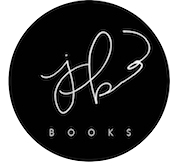Hello, happy holidayers. It's almost 2015, which means about now, you're making a million promises to yourself. "I will lose 15902 pounds." "I will make my bed every morning." "I will finally figure out how to use the garbage disposal." Hats off to you, my friends. There are so many posts out there about how to keep your resolutions next year, but I thought it might be helpful to show you how I kept my resolutions this year. Say goodbye to 2014 with me, won't you?
On January 6th of last year, I wrote this post and made a handy dandy resolution guide for myself. Let's see how I did, shall we?
2014 Goals
- Edit. Edit. Edit More. When I first wrote this, it was in regards to my first manuscript. Now that I've finished These are the Moments, the full editing process is under way. I've completed my first read-through, and now it's on to implementing the second draft edits. Mission Accomplished.
- Create an E-Newsletter. Hooray! The Blots & Plots Newsletter is a real thing. Currently, I'm at about 112 subscribers. Not too shabby, huh? This year, I intend to utilize this even more, tailoring it to your wants/needs/requests. Mission accomplished.
- Go Outside. Explore. Travel. This is less writing-focused, but certainly feeds into the inspiration for writing. In the beginning of this year, I moved to Houston, Texas. I attended a Writer's Conference in Austin, and a Blog Conference in Galveston. There could definitely be more exploring and traveling, but overall, I'm happy with this. Mission accomplished.
- Build a Blog Audience. As we speak, I'm at 2,464 followers on Twitter. I've started an Instagram, had a successful following on Pinterest and have a very interactive space on this blog of mine. I've made incredible friends through this space, and I'm grateful to anyone who visits me here. I can't wait to see where all of this goes. Mission accomplished.
- Finish. That. Novel. (Excuse me while I jump for joy.) Check and check. Mission accomplished.
Bonus Achievements
- Empty Bookshelf Challenge. On my Goodreads page, I made a goal to read 40 books this year. So far, I've read 37. (I'm pretty positive this will hit at least 38 by the end of the year.) This was a completely random number I pulled out of the sky, so I'm pretty happy with this result. Mission almost accomplished.
- Oh yeah, I'm a published author. At a later date, there will be a complete post about this, but for now, just know that my short story, "Carry Urns & Stowaways" was recently published in an Australian anthology called Kindling, by the wonderful people at Writer's Edit. This was an amazing journey, and I'm thrilled to be even just a small part of it. Mission super accomplished.
A Special Note/Words of Un-Wisdom
If I could give you one piece of advice on New Year's Resolutions, it would be this: don't waste your time making lofty, unmanageable goals. When it comes to hitting milestones, make lists of things that you're bound to make happen. I knew I would write a book. I knew I would pursue this blog. It was only a matter of time/dedication/tons of coffee. There's something amazing about wanting to climb mountains and bike across the country and be Cheryl Strayed. But I'm not going to live that kind of life (anytime soon, at least). You have to set goals that you can see yourself reaching.
P.S. Thank you for being amazing this year.
P.P.S. That was only un-wisdom because I like putting "un" in front of words. A Very Merry Un-New Year's Eve to you.







